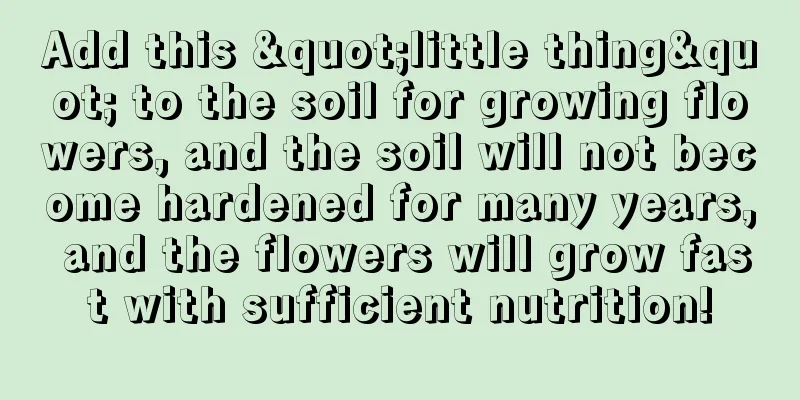How to water potted five-color plums? Look here for the correct method!

Water requirementsThis plant originates from areas with high temperature and rainfall, so it naturally prefers warm and humid environments, but it is also relatively drought-resistant. During normal cultivation, it also has certain requirements for the humidity of the potting soil and air. Different watering requirements at different timesWhen it is still a seedling, it has a great demand for water and needs to be replenished in time; when it is in the flowering period and other periods of vigorous growth and development, it also needs a lot of water. At other times, the requirements are general, and you just need to keep the soil slightly moist or not too dry. Different seasons have different watering requirementsIn spring and summer, the temperature of plants is generally above 15 degrees. At this time, the demand for plants is relatively high, and sufficient water should be supplied. When we enter autumn and winter and the temperature drops below fifteen degrees, we should pay attention. At this time, as the temperature gradually drops, the plants will gradually enter dormancy, and their demand for water will also decrease accordingly. Especially in winter, it is okay to water less or even stop watering altogether. A few points to noteThe five-color plum does like a humid environment and cannot lack water. But like many other plants, it does not like waterlogging or having the soil soaked in water. Otherwise, root rot may easily occur. The best time to water the plants during the day is in the morning and evening. It is not suitable to water them at noon when the sun is shining brightly. In order to keep the surrounding air appropriately moist, you can sprinkle water in the air appropriately throughout the day, which can both supply moisture and keep the air fresh. In addition, in order to make the leaves look brighter, you can spray some water on the leaves. Of course, this method can also be used as a hydrating measure under particularly dry conditions. |
<<: How to propagate water bamboo
>>: How to fertilize bamboo cypress, these four points are crucial!
Recommend
Can compound fertilizer granules be applied to green radish?
1. Is it possible? You can apply compound fertili...
What to do if the leaves of the star beauty turn yellow
Normal phenomenon If the leaves of the Star Beaut...
What are the advantages and disadvantages of watering flowers with white vinegar? What flowers can be watered with white vinegar and water?
Benefits of watering flowers with white vinegar W...
15 Reasons Why Tomato Leaves Turn Yellow
During the process of growing tomatoes, improper ...
A brief introduction to the production and maintenance of thyme miniature bonsai
Step 1: Choose a pot When making a miniature bons...
Methods and technical points of returning corn straw to the field (the significance and methods of directly returning corn straw to the field)
Returning corn stalks to the fields is an importa...
What fertilizer is best for longevity flowers
Fertilization time of Kalanchoe Kalanchoe is gene...
The efficacy and function of yam
The efficacy of yam When it comes to the nourishi...
What flowers are suitable for growing in Taizhou? What are the city flowers and trees?
1. Climate characteristics of Taizhou Taizhou has...
Which fertilizer is better for leafy vegetables?
There are various types of vegetables, so the fer...
When is the best season to plant Nepeta?
Nepeta planting season and time There are two mai...
How to water silver vein flower
Watering tips for silver vein flower Silver-veine...
How many years does the jujube tree bear fruit?
Introduction to Planting Jujube Trees Red dates l...
When is the best time to sow shepherd's purse?
Shepherd's purse belongs to the genus Capsell...
Introduction to Gardenia, Flower Language of Gardenia
1. Family Gardenia is a plant belonging to the Ru...









